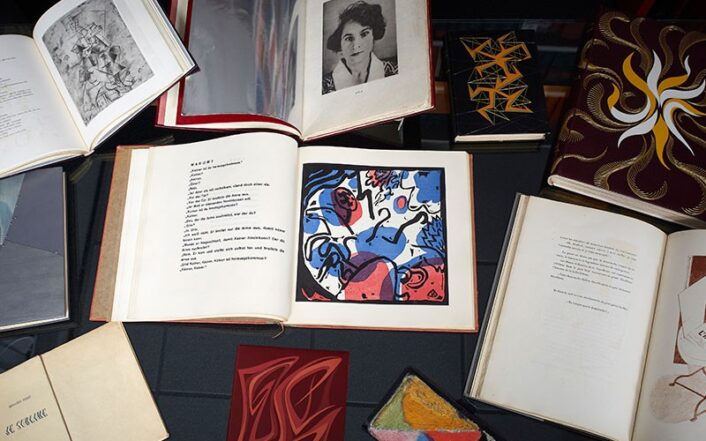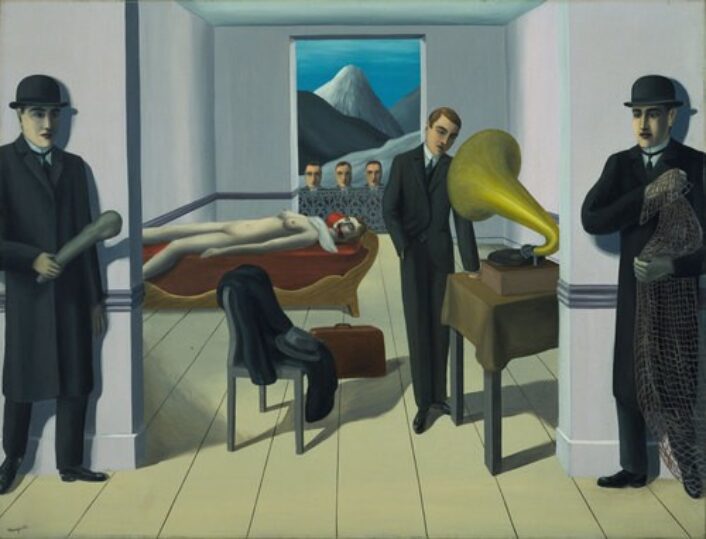Culture
Salvador Dalí’s Surrealist Cookbook
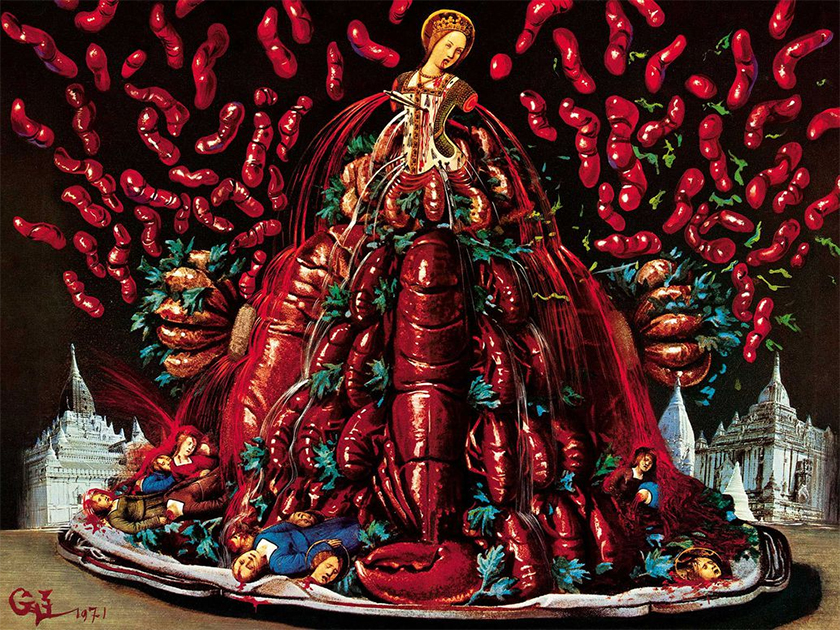
Joan of Arc as the cake-topper atop a tower of crayfish, 1971. The woman’s torso gushes blood from the wounds of her amputated arms.
Image courtesy of: SAVEUR
At the young age of six, Salvador Dalí decided that he wanted to be a chef. Thus, when Les Diners de Gala was published in 1973, it was truly a dream for the surrealist artist who illustrated the book. Published just once in 1973, the strange cookbook pairs 136 recipes with the exceptionally bizarre illustrations and collages that Dalí created especially for this publication.
The recipes themselves are humorous… and just like his artwork, they are designed to disgust and amuse in the same breath. Steak is baked for hours on end, top-quality protein such as caviar and lamb shoulder is covered in béchamel sauce, and offals are mashed into a puree that resembles mushed avocado.
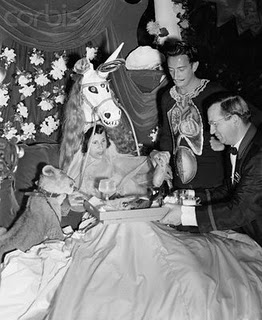
Dalí’s wife Gala, dressed as a unicorn and accompanied by a lion cub, is being served by Dalí himself.
Image courtesy of: Rebecca M. Bender, PhD
Unable to fulfill his childhood dream, Dalí instead became the ultimate host throwing elaborate and opulent dinner parties. These events, which were co-hosted by his wife Gala, were theatrical productions, often more dramatic than gustatory.
Those lucky enough to make it onto the guest list were required to wear themed costumes. To add to the excitement, wild animals often roamed free around the dinner table. These early 1970s dinner parties had no rules, and essentially no recipes for the food that was served. The cast of characters was often the entertainment itself and the food was unpredictable and reminiscent of Dalí paintings and sketching. For these events, nothing was “too much” as the aim was to shock and delight equally.
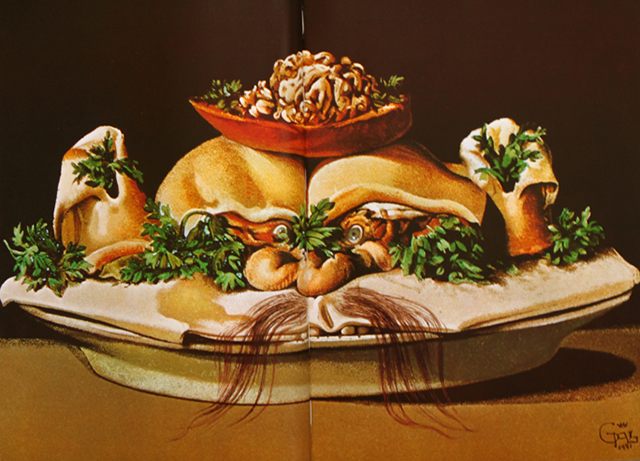
An illustration of a recipe from the cookbook.
Image courtesy of: Buro 247
The original cookbook was only published once, and 400 copies of Les Diners de Gala are thought to have survived. Tasche republished the rare book in 2016, for the first time in 43 years, so that today’s fans of food and art alike can peruse the pages.
Interestingly, despite the unusual ingredients and preparation methods, the recipes that appear in the book actually came from some of Paris’ top restaurants (ones that Dalí was known to have frequented). Dalí was particularly obsessed with lobsters, sea urchins, and eggs; as is evident in many of his Surrealist paintings. One of his most famous pieces, the melting watches in “The Persistence of Memory,” was modeled on oozing Camembert cheese. Above all, bread consumed Dalí’s imagination. Baguettes often appeared in his paintings, along with traditional Catalan pan… all of which point to Dalí’s dietary obsessions.
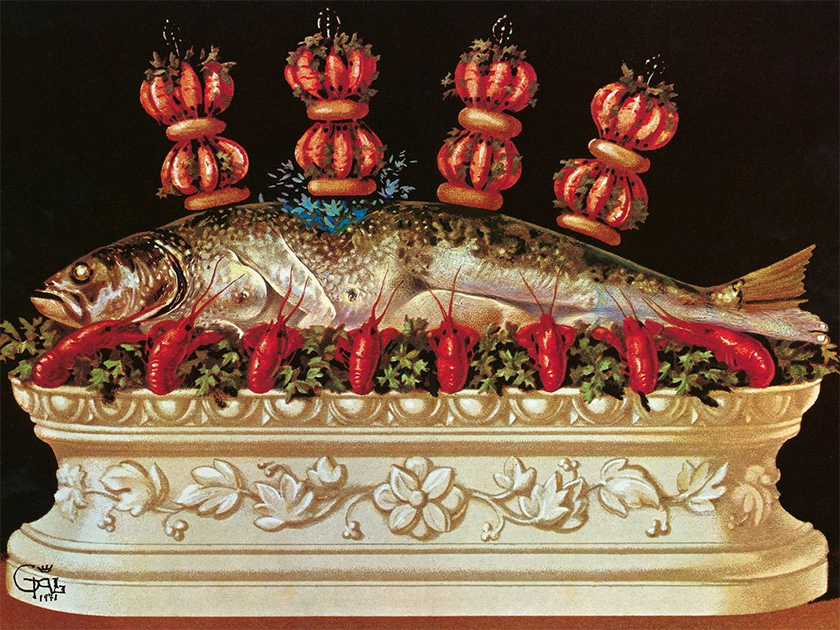
A whole cooked fish hiding the sensual body of a woman. Look closely and you will see a naked woman laying down as she is getting prodded by the red shrimp underneath her.
Image courtesy of: SAVEUR
The strange cookbook is divided into 12 chapters, the 10th chapter is devoted to aphrodisiacs… an idea quite familiar in Dalí’s artwork. The cookbook was created with both the passion for food and Gala, the artist’s longtime lover and wife, in mind.
Throughout his career, Dalí often spoke of desiring to “consume” the things he most loved; for example, Gala’s beautiful face. The fact that most of the ingredients can be safely ingested might be why he held gastronomy in such high regard. He once wrote, “It does not seem enough to devour things with our eyes. Our anxiety to join actively and effective in their existence brings us to want to eat them.”
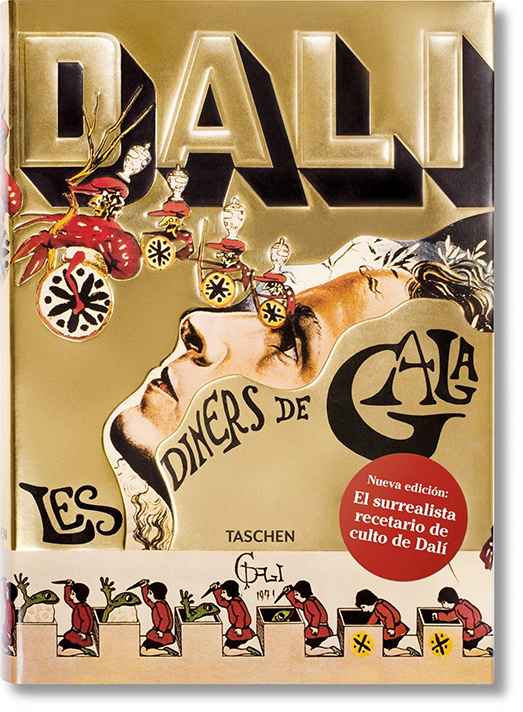
Dalí’s cookbook, Les diners de Gala. Republished by Taschen in 2016.
Image courtesy of: Amazon
Alongside the extraordinary illustrations, the book also features photos of the artist consuming different dishes or sitting surrounded by them. For Dalí, food was never just a source of nourishment. For the artist, food was filled with social and political meanings that were subtle and often overlooked. Dalí used food as a root of symbolism and a metaphor for sex, pleasure, pain, and politics.
About his cookbook Dalí said, “If you are a disciple of one of those calorie-counters who turn the joys of eating into a form of punishment, close this book at once; it is too lively, too aggressive, and far too impertinent for you.” Fair enough!

